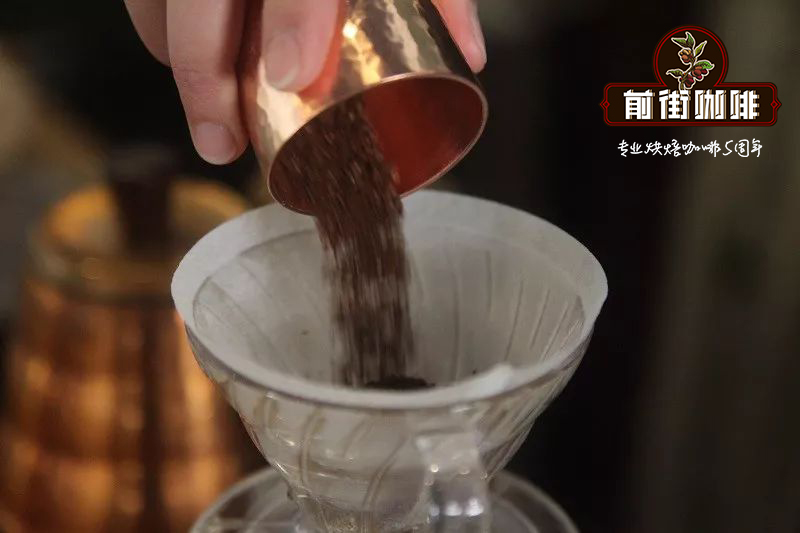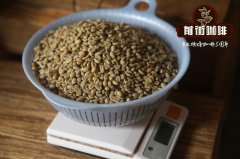What is the difference between Indonesia and coffee Java, Sumatra and Sulawesi?
What is the difference between Indonesia and coffee Java, Sumatra and Sulawesi?

Indonesia, the "country of the Thousand Islands", has the largest number of islands in the world.
When it comes to Indonesia, the most familiar is probably the resort island of Bali.
According to Indonesia's Qiandao Daily, Indonesia has the largest coffee planting area in the world, but due to the low efficiency of coffee production, Indonesia's coffee production is only the third largest in the world after Brazil and Vietnam. Irfan, president of the Indonesian Coffee processing and Export Enterprises Association, said a few days ago that the coffee planting area in Indonesia has reached 1.3 million hectares, which is much more than that of major growing countries such as Brazil (650000 hectares) and Vietnam (420000 hectares). However, the yield per hectare is only 760kg, which is much lower than that of Brazil (6mur7 tons per hectare) and Vietnam (3mur4 tons per hectare), greatly affecting Indonesian coffee production. He said that Indonesia has great potential for coffee production, and if it can increase the yield to more than 2 tons per hectare, Indonesia is expected to overtake Vietnam and Brazil to become the world's largest coffee producer. Hurley, an expert from the Agricultural planting Department of the Indonesian Ministry of Agriculture, said that at present, the Indonesian government still suffers from difficulties in improving coffee production, mainly because many coffee trees are older, and the Ministry of Agriculture proposes to increase production by planting new coffee trees. Indonesia mainly produces robusta and Arabica coffee. Robusta coffee is more popular in the domestic market, and Arabica coffee is favored by foreign markets. According to statistics from Indonesia's Ministry of Agriculture, about 955000 hectares of plantations in Indonesia are still in production, including 760000 hectares for robusta coffee and 195000 hectares for Arabica coffee. About 92% of coffee production comes from individual coffee farmers, and only 8% from state-run farms. A total of 1.9 million farmers in Indonesia make a living by growing coffee, with an annual output of 748000 tons in 2012, 148000 tons of Arabica coffee and 600000 tons of robusta coffee.
Coffee history
In 1696, the then Governor of the Netherlands in Malabar, India, gave a batch of coffee seedlings to the Governor of the Netherlands in batavia in Batavia (present-day Jarkata in Jakarta). This was the first time that coffee was grown in Indonesia. However, the first batch of coffee seedlings were washed away by the flood. In 1699, Batavia accepted the gift again. This time, the coffee seedlings survived successfully and ushered in the first harvest in 1701, which began the coffee trip to Indonesia.
At first, coffee was grown in and around Jakarta, and then gradually expanded to central and eastern Java, as well as Sulawesi, Sumatra and Bali. At the same time, in eastern Indonesia, coffee was also grown in Flores on the island of Flores and Timor on the island of Timor in the Portuguese territory at that time, but the source of the coffee seedlings was different.
Indonesian coffee began to supply the European market in 1711, when Indonesia was the first country outside Africa and Arabia to grow coffee on a large scale. It became the world's largest exporter of coffee in the 1880s. The fame of Java coffee began here.
The prosperity of coffee in Indonesia was not sustainable, coffee production was fatally hit at the end of the 18th century, and leaf rust, originally found in West Java, spread rapidly, destroying the Arabica coffee estate in Indonesia. The leading position of the coffee trade was replaced by the American producing countries. However, it is worth mentioning that the leaf rust disaster did not affect the eastern Indonesian producing areas, namely Flores Island and Timor, where the genes of some coffee trees in Timor today can be traced back to the 16th and 17th centuries.
Main coffee producing area
1. Java Java Coffee
The reputation of Java coffee, the oldest producing area, continues from the glory days of Indonesian coffee in the 18th century, and the mention of Java coffee is still reminiscent of high-quality delicacy, when the most famous blend is Java coffee with Yemeni mocha. In addition, Java also has a very famous old coffee Aged coffee, or monsoon coffee Monsooned coffee.
Java is the most economically developed island in Indonesia and the most densely populated area.
Jakarta, the capital of Indonesia, located in the northwest of Java, is the largest city in Southeast Asia. In addition, Indonesia's second and fourth largest cities are located on the island of Java.
Java is the first region in Indonesia to grow coffee and has taken the lead in the world coffee market as early as the 18th century. The famous Java mocha, made from Java coffee mixed with Yemeni mocha, represents the coffee impression of an era. In addition, there is the classic monsoon coffee Moosooned-coffee, or old coffee Aged Coffee.
Coffee cultivation in Java was originally carried out as a large farm, established by Dutch colonists in the 18th century, and gradually transformed into small farmers after World War II and many changes. High-quality Javanese coffee usually comes from five existing large farms. Although Java coffee production only accounts for about 10% of Indonesia's total coffee production, it is an important component of Indonesian boutique coffee.
The main coffee producing area on the island is located in Ijen Plateau, the Ijen Highland area around Ijen Volcano.
Java coffee is traditionally treated with water.
two。 Sumatra Sumatra Coffee
Among the most legendary coffee producing areas, well-known coffee logos include Mandheling, Lintong and Gayo Mountain.
Sumatra Island, formerly known as "Golden Island" and "Jinzhou", is famous for its rich gold deposits.
The topography of Sumatra is long and narrow. The topography of Sumatra is mainly from northwest to southeast of the island's Bali Mountains Barisan Mountains and the eastern lowlands. The mountains stretch, with more than 90 volcanoes and many volcanic lakes, volcanoes provide fertile soil suitable for coffee growth. For the tropical rain forest climate, high temperature and rainy all the year round.
Sumatra is the largest producer of Indonesian coffee, and well-known coffee-growing areas are mainly concentrated in the northern mountains, including Aceh in the northernmost province of Aceh and Sumatera Utara in North Sumatra. Including the well-known Mantenin Mandheling, Lin Dong Lintong, Jiayushan Gayo Mountain.
The name of Mandheling coffee is said to come from the local people, mandailing. The producing areas mostly point to the mountains in the north of Lake dopa, and the specific producing areas need to be verified.
Lintong coffee comes from the foothills around Lake Lake Toba in North Sumatra, Sumatra's largest volcanic lake, and its name comes from the small town called lintong in the southwest of Lake dopa.
Gayo mountain Coffee from Takengon, Takangong, Aceh Province and the mountains around Lake Lake Tawar.
Medan Medan and Padang Padang are important cities involved in coffee. They are the capital of North Sumatra and West Sumatra respectively, and they are also the most densely populated areas in Sumatra. The former is an important distribution center for Sumatra coffee exports, while the latter is also a well-known coffee production around, such as Ankola.
Coffee from Sumatra includes Arabica and Robusta, which is usually grown at high altitudes in the mountains, while robusta is grown in the lowlands. Coffee processing is famous for the traditional "wet planing", Giling Basah,wet-hulled, and the special treatment stems in part from the local humid climate.
3. Sulawesi Sulawesi Coffee
The most famous is Toraga, or Tonaga, Toraja.
Sulawesi Island, formerly known as Celebes Island "Celebes", is also called Celebes Coffee Celebes Coffee.
Toraja coffee comes from Tana Toraja in the Tanatolaga region of South Sulawesi, South Sulawesi Province, named after the local population, the Toraga. Tana Toraja is located about 300km north of Makassar, the provincial capital of Wangkasek, and is a famous tourist destination in Indonesia.
At first, the coffee industry in Sulawesi mainly supplied the Japanese market, and Japanese businessmen established the original coffee industry on the island of Sulawesi.
The traditional method of coffee treatment is wet planer, Giling Basah,wet-hulled.
In addition, Bali, Flores and Timor are also important producing areas.
Coffee planting mode
In the Dutch colonial era, coffee was mainly grown in large estates. After World War II, it experienced the process of nationalization and the movement of independence. Today, about 90% of the coffee produced in Indonesia is produced by small farmers.
Coffee variety
At first, Indonesian coffee was Arabica, and the Arabica manor was destroyed by a leaf rust disaster at the end of the 18th century. at first, the Dutch tried to grow Liberian seeds, and later, they began to plant Robsta seeds on a large scale.
At present, Arabica species account for about 10-15% of the coffee produced in Indonesia, and the rest is Robusta. Although Liberika species are produced, they are basically not included in the coffee trade.
Coffee harvest
There are usually two harvest seasons in Indonesia, the main harvest season (main crop) occurs from September to October, and the second harvest season (fly crop) occurs from May to June.
Arabica will be picked by hand, and workers who pick by hand will enjoy a minimum wage, on the basis of which there will be performance pay.
Coffee treatment
Coffee from Java is traditionally washed.
Sumatra and Sulawesi are famous for their "wet planing" wet-hulled with Indonesian characteristics, known locally as Giling Basah.
The drying methods in coffee processing vary according to the situation: high-priced bed drying in the awning, balcony drying, roadside drying and other methods are all used.
Important Notice :
前街咖啡 FrontStreet Coffee has moved to new addredd:
FrontStreet Coffee Address: 315,Donghua East Road,GuangZhou
Tel:020 38364473
- Prev

Kenya AA coffee Kenya coffee grading system what are the characteristics of Kenyan coffee beans
Under the influence of British colonization, Kenyans love coffee. In Kenyan restaurants, drinks have to be paid extra, but coffee is provided free of charge. The history of Kenyan coffee can be traced back to the end of the 19th century, when the British established a sound cultivation and quality control system. After Kenya became independent in 1964, the coffee industry continued to develop on the existing basis, and now it is a world-famous high-quality product.
- Next

Kenya AA, Fairtrade coffee beans without FTO certification
Recently, several regular customers were very happy to know that we started to sell Fairtrade beans! However, with regard to Fairtrade beans, what we pursue is the imprint of the trademark or the pursuit of the spirit of fair care. Generally speaking, most of the popular Fairtrade beans on the market will be certified by the Fair Trade Organization, which can ensure that you buy them.
Related
- Detailed explanation of Jadeite planting Land in Panamanian Jadeite Manor introduction to the grading system of Jadeite competitive bidding, Red bid, Green bid and Rose Summer
- Story of Coffee planting in Brenka region of Costa Rica Stonehenge Manor anaerobic heavy honey treatment of flavor mouth
- What's on the barrel of Blue Mountain Coffee beans?
- Can American coffee also pull flowers? How to use hot American style to pull out a good-looking pattern?
- Can you make a cold extract with coffee beans? What is the right proportion for cold-extracted coffee formula?
- Indonesian PWN Gold Mandrine Coffee Origin Features Flavor How to Chong? Mandolin coffee is American.
- A brief introduction to the flavor characteristics of Brazilian yellow bourbon coffee beans
- What is the effect of different water quality on the flavor of cold-extracted coffee? What kind of water is best for brewing coffee?
- Why do you think of Rose Summer whenever you mention Panamanian coffee?
- Introduction to the characteristics of authentic blue mountain coffee bean producing areas? What is the CIB Coffee Authority in Jamaica?

